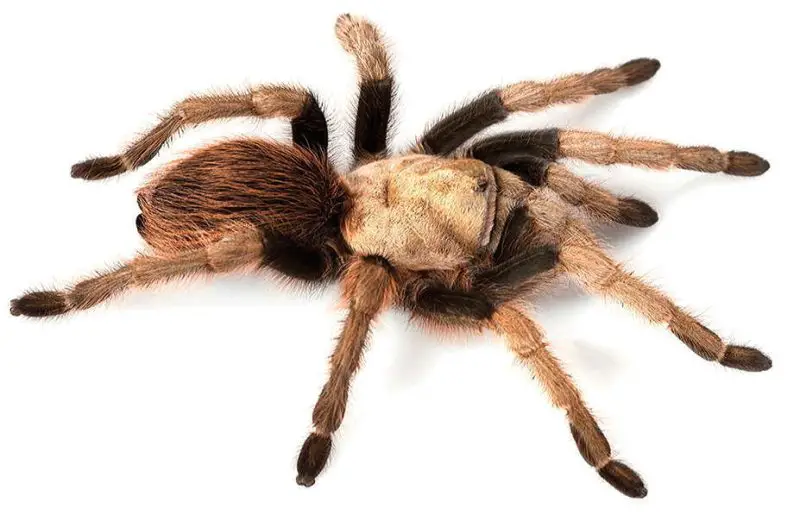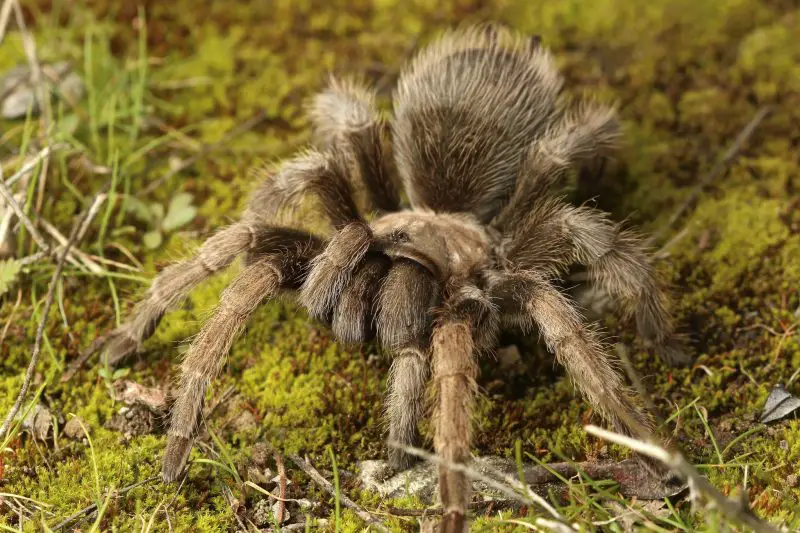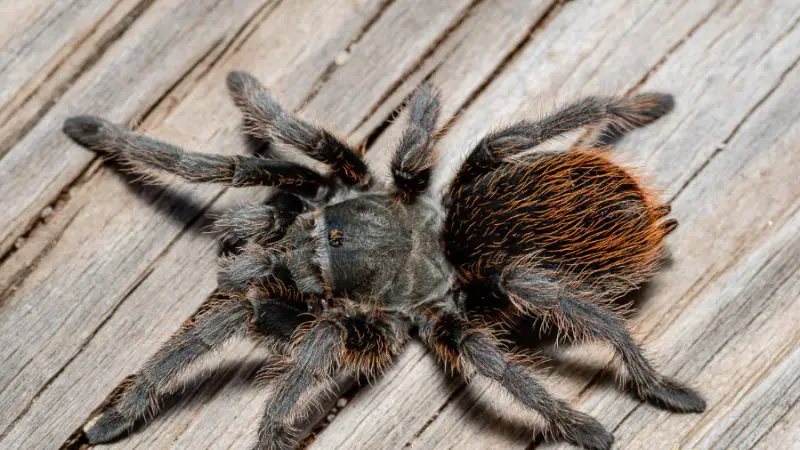Arizona is known for its desert landscapes, scorching heat, and breathtaking sunsets—but few people realize that the state is also home to one of the most fascinating and misunderstood creatures in North America: the tarantula. These large, hairy spiders roam the deserts and grasslands, living secretive lives underground. While their appearance might terrify some, their true nature is far more intriguing than you might expect.
For decades, Arizona’s tarantulas have inspired fear and fascination. From Tucson to Phoenix, sightings often spark myths about their danger to humans. Yet these arachnids are mostly gentle giants—slow-moving, patient predators that play a crucial role in the desert ecosystem. What’s more surprising? Their complex behaviors, their unusual mating rituals, and their surprising resilience to Arizona’s unforgiving climate.
In this article, we’ll uncover the hidden truths about tarantulas in Arizona—how they live, why they’re essential to the ecosystem, what dangers (if any) they pose to humans, and the surprising facts that even long-time residents might not know.
The Tarantula Species of Arizona
Arizona Blonde Tarantula (Aphonopelma chalcodes)

The Arizona Blonde Tarantula is the most common and iconic species in the state. With a light tan carapace and dark brown legs, it’s easily recognizable and often seen during the summer monsoon season when males wander in search of mates. Females can live up to 25 years, while males typically survive only 10–12 years.
These spiders are found throughout southern Arizona, particularly around Tucson and the Sonoran Desert. Despite their intimidating size—some reaching nearly 6 inches in leg span—they’re not aggressive and rarely bite unless provoked.
Desert Tarantula (Aphonopelma iodius)

The Desert Tarantula, also called the “Great Basin Blond Tarantula,” inhabits northern and central Arizona’s drier grasslands. They dig deep burrows in sandy soil, often covered by silk webbing to protect against predators. These spiders are more active at night, hunting crickets, beetles, and other insects.
Chiricahua Tarantula (Aphonopelma chiricahua)

Named after the Chiricahua Mountains in southeastern Arizona, this species is smaller and darker than its desert cousins. It thrives in higher elevations and pine-oak forests. Its secretive nature makes it less commonly seen, but it’s vital in keeping insect populations under control.
Hidden Habitats: Where Tarantulas Live in Arizona
Tarantulas are masters of concealment. Most of their lives are spent underground in silk-lined burrows, which help regulate temperature and humidity. Arizona’s deserts may look barren, but beneath the surface lies a network of tunnels that serve as homes to thousands of these spiders.
They prefer soft, sandy soil where they can easily dig and maintain burrows. These burrows can be more than a foot deep, providing safety from predators like wasps, snakes, and coyotes. The silk inside the burrow also strengthens the tunnel and alerts the tarantula when prey passes by.
In the summer, especially after rain, males emerge from their burrows and begin their annual migration to find females. This is when most human encounters occur—large, hairy spiders wandering across roads, sidewalks, and driveways in Arizona’s warm evenings.
The Truth About Their Venom
Are Arizona Tarantulas Dangerous?
Despite their fearsome appearance, Arizona tarantulas are not dangerous to humans. Their venom is mild, comparable to a bee sting, and is primarily used to subdue small prey such as crickets, beetles, and grasshoppers. A bite might cause brief pain and swelling, but serious medical issues are extremely rare.
More concerning are their urticating hairs—tiny, barbed bristles on their abdomen that they can flick toward predators. These hairs can irritate skin and eyes, so handling them is not recommended unless you know how to do so safely.
Medical Significance
There are no recorded human fatalities from tarantula bites in Arizona. Most people who report bites were either trying to handle the spider or accidentally stepped on it. In most cases, washing the affected area and applying a cold compress is sufficient treatment.
Surprising Facts About Arizona Tarantulas
1. Tarantulas Can Live for Decades
Female tarantulas in Arizona can live over 25 years, while males typically live around a decade. The females spend most of their lives in the same burrow, rarely leaving it except for feeding or breeding.
2. They Are Gentle by Nature
Despite Hollywood depictions, tarantulas are not killers. They are docile and prefer retreating to fighting. Even when threatened, they rely on warning postures—raising their front legs or flicking hairs—before resorting to a bite.
3. Males Go on a Dangerous Journey
During the fall mating season, males travel long distances searching for females. Many die during this journey due to predators, dehydration, or exhaustion. After mating, females may even consume the males—a grim but natural part of their life cycle.
4. They Help Control Pests
Tarantulas are nature’s pest control agents. By feeding on insects, they help balance Arizona’s ecosystem and prevent agricultural pests from spreading.
5. They’re Surprisingly Fast
While tarantulas appear slow, they can sprint short distances when startled or chasing prey—reaching speeds of up to 10 miles per hour for brief bursts.
Mating Rituals and Life Cycle
Tarantula courtship is both complex and risky. Males locate females by following pheromone trails left near burrow entrances. Once he finds a receptive female, he performs a rhythmic tapping dance using his front legs to communicate his intentions.
If the female accepts, she allows him to approach and transfer his sperm using specialized appendages called pedipalps. Once mating is complete, the male usually makes a quick retreat—since the female may turn aggressive immediately afterward.
Females lay 50 to 1,000 eggs in a silk cocoon, which they guard fiercely for up to two months. When the spiderlings hatch, they disperse into the desert, beginning a long and perilous journey of survival.
Tarantulas and Arizona’s Desert Ecosystem
Tarantulas play a critical role in Arizona’s desert ecology. As predators, they keep populations of crickets, beetles, and other insects in check. They, in turn, become prey for owls, snakes, and the tarantula hawk wasp—a large, metallic-blue wasp whose sting is among the most painful in the insect world.
The wasp paralyzes a tarantula and lays an egg on its body. The larva then feeds on the still-living spider—a gruesome but essential balance in nature’s cycle.
By maintaining insect populations, tarantulas indirectly protect crops, gardens, and even human health by limiting pests like cockroaches and locusts.
Myths About Tarantulas in Arizona
Myth 1: Tarantulas are deadly to humans.
Fact: Their venom is weak and not dangerous to humans. Fear of tarantulas is largely psychological, not medical.
Myth 2: They attack humans unprovoked.
Fact: Tarantulas are shy creatures. They bite only when cornered or handled roughly.
Myth 3: Tarantulas are aggressive during mating season.
Fact: While males roam more during fall, they are not aggressive—they’re simply searching for mates.
Myth 4: You’ll find tarantulas inside homes frequently.
Fact: Tarantulas prefer staying outdoors in burrows. They rarely enter homes unless seeking warmth or safety.
Myth 5: They are blind.
Fact: Tarantulas have eight small eyes that detect movement and light, though they rely more on vibration and touch than vision.
Human Encounters and How to Stay Safe
When You See a Tarantula
If you encounter a tarantula on a hike or in your yard, the best response is to observe from a distance. Do not attempt to handle it or chase it. Most tarantulas are on their way to find mates or new burrow sites.
Around the House
- Seal cracks and door gaps to prevent entry.
- Keep your yard clean of debris and leaf litter.
- Avoid handling them—even small ones can flick irritating hairs.
- If a tarantula wanders indoors, gently guide it into a container and release it outside.
If Bitten
A tarantula bite in Arizona is not medically dangerous but can be painful.
- Clean the wound with soap and water.
- Apply a cold compress to reduce swelling.
- Avoid scratching.
- Seek medical attention if you experience an allergic reaction.
Why Tarantulas Are Important to Arizona
Despite their fearsome reputation, tarantulas are beneficial to Arizona’s environment. They regulate insect populations naturally, reducing the need for pesticides. Their burrows also provide microhabitats for smaller species like beetles and scorpions.
Moreover, they are a symbol of Arizona’s wild spirit—ancient survivors that have thrived for millions of years in one of the harshest environments on Earth.
Fun and Lesser-Known Tarantula Facts
- Tarantulas molt their exoskeleton several times throughout their life, sometimes even regrowing lost limbs.
- Their fangs can penetrate tough insect shells but are not strong enough to pierce thick clothing.
- They clean their fangs and body meticulously after eating.
- A tarantula’s heart pumps blood-like fluid called hemolymph, which helps distribute oxygen through the body.
- They make excellent subjects for wildlife photography due to their size, coloration, and nocturnal habits.
FAQs About Tarantulas in Arizona
Are Arizona tarantulas venomous?
Yes, but their venom is mild and not harmful to humans. It’s primarily used for hunting small insects.
How big do Arizona tarantulas get?
Adult females can reach 5–6 inches in leg span, while males are slightly smaller and more slender.
When are tarantulas most active in Arizona?
They’re most active from July through October, especially during the monsoon season and early fall evenings.
Can I keep a tarantula as a pet in Arizona?
Yes, but you should only buy captive-bred species. Collecting wild tarantulas from protected lands is illegal.
Do tarantulas bite often?
No. Bites are extremely rare and occur only when they feel threatened or trapped.
What eats tarantulas in Arizona?
Predators include tarantula hawk wasps, roadrunners, snakes, and small mammals like foxes.
Are tarantulas endangered in Arizona?
No, but habitat loss and urban expansion have reduced some populations. Conservation efforts aim to protect their natural environments.
Conclusion
The truth about tarantulas in Arizona is far from terrifying—it’s fascinating. These creatures, often feared because of their size and appearance, are actually gentle, slow-moving, and ecologically essential. They keep the desert’s insect population in check, inspire scientific research, and remind us of the resilience of desert life.
If you see a tarantula wandering across an Arizona road or desert trail, remember that it’s not a monster—it’s a vital part of the ecosystem. By respecting and understanding these misunderstood arachnids, we not only protect them but also preserve the delicate balance of the Arizona wilderness.
Next time you explore the desert at dusk, take a closer look—you might just witness one of Arizona’s most mysterious creatures living quietly among the sands.






